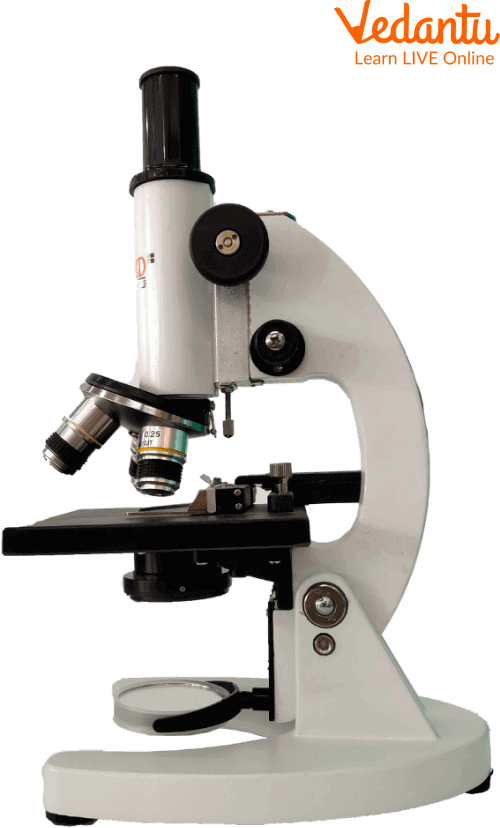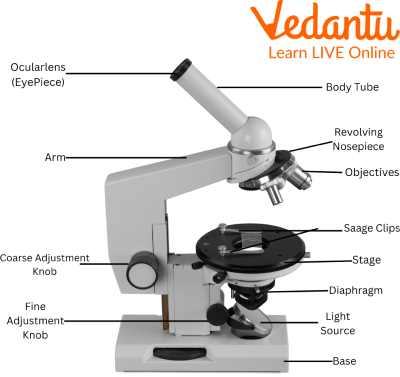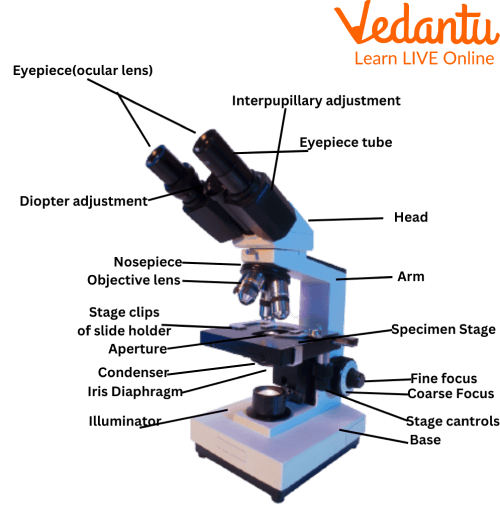




Understanding the Uses of Microscopes
The microscope is an instrument which is used to observe tiny objects. They are often used in laboratories. A convex lens is used in a simple microscope to manipulate how light enters an eye. Many types of microscopes are there which are used for different purposes. The invention of the microscope dates back to the 16th century and was founded by Zacharias Janssen, a Dutch eyeglass maker.
Now you must be curious about the various types of microscope and their uses, so let’s read about it in this article.

Microscope
Types of Microscope in Detail
Various types of microscopes are there to use in laboratories. All microscopes have different uses and applications as well as importance. We will learn about the uses of the microscope below. There are majorly five types of microscopes that are mentioned below along with microscope images.
Simple microscope
Compound microscope
Electron microscope
Stereo microscope
Scanning probe microscope
Simple Microscope
A simple microscope is made of a single lens. It has a short focal length and a double convex lens. It produces a big image of tiny objects and creates a visual representation. It is used for very basic purposes rather than big investigations.
The various parts of a simple microscope are an eyepiece, body, specimen stage, objective lens, aperture diaphragm, nosepiece and base.

Simple Microscope
Uses of the Simple Microscope
The uses of the simple microscope are as follows:
It is used for examining archaeological materials such as stamps, engravings, etc.
It is used to observe tiny creatures like algae, fungi, and different biological samples.
Jewellers use it to examine the piece of gem or jewellery.
It is used by skin doctors to inspect skin allergies.
It is often used in nutrition research as well.
Compound Microscope
A compound microscope has a flat mirror on one side and a concave mirror surface on the other side. Many lenses are used in a compound microscope. It is used to examine real-world objects that are too small for the naked eye to see. It is mostly used for extensive investigative purposes.
The various parts of a compound microscope are a base, arm, stage, clips, diaphragm, nosepiece, coarse adjustment knob, and fine adjustment knob.

Compound Microscope
Uses of the Compound Microscope
The uses of the compound microscope are as follows:
It is mostly used to examine bacteria and viruses.
It is used to examine the minerals and metals in a blood sample.
It is also used in the investigation of a crime in a forensic lab.
It is used to observe the plant cells and different bacterias that live on these cells.
It is also found in schools for academic purposes.
Electron Microscope
An electron microscope is a microscope that uses electrons rather than light to observe an object. In an electron microscope, electromagnets function as a lens and the whole of its system works in a vacuum.
The resolution of an electron microscope is very high and therefore it produces a high-resolution image of an object on a fluorescent screen. It is used in detailed investigations. Also, there are two types of electron microscopes: Transmission electron microscope (TEM) and Scanning electron microscope (SEM).
The various components of an electron microscope are sources of light, electromagnetic fields, image viewing and recording system.
Electron Microscope Uses
The uses of an electron microscope are as follows:
It is used for high-resolution imaging, inspection, and computer chip manufacturing.
It is used to inspect the tiny features of various diseases like tumours.
It is used in the study of rocks and minerals.
It is also used in the investigation of jewellery and gemstones.
Stereo Microscope
A stereo microscope produces a three-dimensional view of an object/specimen. It has separate objective lenses and eyepieces for each eye. Stereo microscopes have lower magnification, but longer working distances.
The various parts of a stereo microscope are: optical parts: eyepiece lenses, optional eyepiece, eyepiece tube, diopter adjustment knob, and objective lenses. Other vital parts are the focus, working stage, stage clips, and transmitted illumination.
Uses of Stereo Microscope
The uses of the stereo microscope are as follows:
It is used for observing crystals.
It is used when working with circuits and watches.
It is also used in microsurgery.
It is mostly used in examining specimens like animals and plants.
Scanning Probe Microscope
A scanning probe microscope is a type of microscope in which the examination of specimens is done at the nanoscale level. This type of microscope helps to study the specimen’s properties, reaction time, and also its behaviour when stimulated.
Uses of Scanning Probe Microscope
The uses of scanning probe microscope are as follows:
It is used to study the magnetic properties of any object.
Information can be transferred to the specimens by using this microscope.
It is used for studying the electrical properties of an object.
It is also used for the examination of nanoscale measurements of friction, wear, adhesion, and lubrication.
How to Use a Microscope?
The uses of the microscope are as follows:
Place your prepared slide on stage with care (flat one down under the lens).
Aim the glass or light such that it is illuminating the stage's hole.
Start by using the lens with the least power so you can see more of the slide.
As soon as the image seems clear, look through the eyepiece and adjust the focusing knob.
Until you acquire a clear image, try using alternative (higher-powered) objective lenses.
Summary
A microscope is used to magnify small objects/specimens. An image of an object or a sample can be examined or observed in detail with a lens. As we read, various microscopes serve different purposes. Some are used to see the shape of a cell and its nucleus, some are used for the investigation of a crime, some are used for inspecting diseases or allergies while others are used for even high-resolution imaging or nanoscale measurements. We studied the uses of the microscope and also looked at the microscope images in this article. We hope you enjoyed reading this article. Visit our website to learn more of such articles.
FAQs on Types of Microscope and Their Uses
1. Who is known as the father of microscopy?
Antoni van Leeuwenhoek is known as the father of microscopy.
2. Who uses a microscope?
Biological scientists, forensic science technicians, jewellers and gemologists, and environmental and geoscientists use microscopes for different purposes.
3. Which mirror is used in a microscope?
A concave mirror is used in a microscope for throwing light on the object being viewed.
4. Who created the microscope?
It is unknown who created the first microscope; however, Zacharias Janssen, a Dutch eyeglass manufacturer born in 1585, is credited with creating one of the early compound microscopes (those with two lenses) around 1600.
5. How has the microscope impacted the world?
The microscope invention allowed people to enter the world of extremely tiny organisms, where the disease-causing substances were identifiable, named, and eventually prevented. Charles Spencer provided evidence that viewing images were altered by light.
6. How does a microscope create its image?
Image generation in an optical microscope happens at the middle image plane due to conflict between direct sunlight that has unalterably passed through the specimen, and light that the specimen's tiny features have diffracted.









